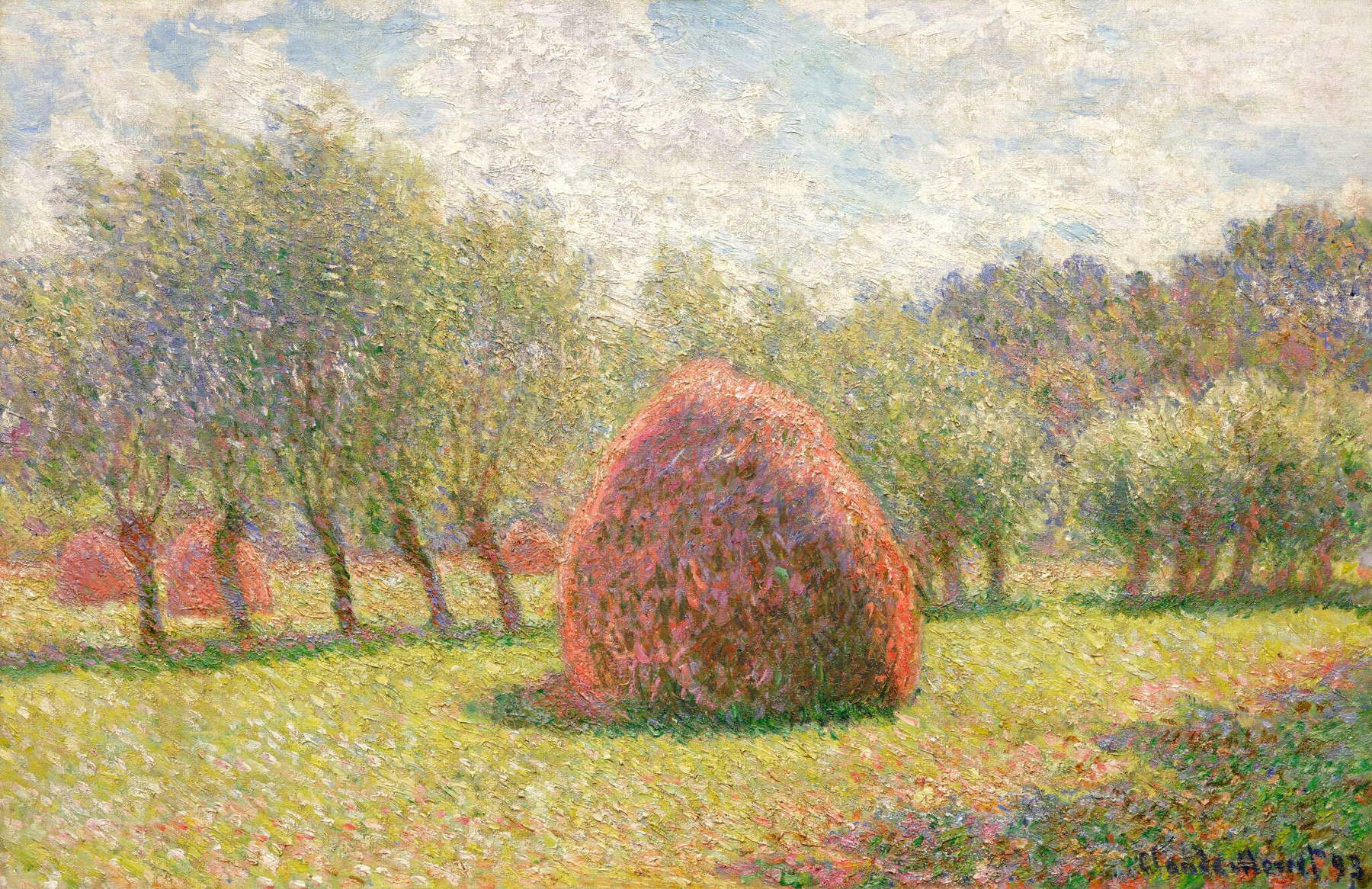Sotheby ’s auction house has sold at auction in New York for nearly $35 million the work Haystacks at Giverny (1893), in French Meules à Giverny, by French Impressionist artist Claude Monet (Paris, 1840 - Giverny, 1926). Prestigious auction houses Christie’ s and Sotheby’s opened their spring sales in the U.S. metropolis on Monday, with a mood of confidence following positive results in London and Paris in the wake of the 2023 global art market slump.
On Wednesday evening, Sotheby’s (under the ownership of French-Israeli billionaire Patrick Drahi), announced the online, telephone sale at its Manhattan location of some fifty modern art paintings, totaling $235 million. Among them the Claude Monet painting sold “in an eight-minute bidding war” for $34.8 million, a Sotheby’s spokesman said. In addition, a work by the Anglo-Mexican Leonora Carrington (Lancaster, 1917 - Mexico City, 2011) broke the artist’s auction record: her painting ’Les Distractions de Dagobert’ actually sold for $28.5 million to a buyer “in the room after a ten-minute bidding war.”
Unlike all paintings on this subject executed previously, the present work and two directly related compositions take full advantage of the revelations about surface manipulation that Monet discovered in his series centered on Rouen Cathedral, which he began in 1892 and finished in 1894. Monet found his inspiration in the fields adjacent to his home in Giverny. These large sheaves of wheat were typical of northern France: gigantic conical structures stacked in such a way as to allow the stalks to dry and prevent mold growth before the wheat was separated from the stalk by a threshing machine.Not every farming village had its own threshing machine, and the wait for one of these machines to reach a specific location often took months: grain cut in the summer might remain in its neat pile until January or February of the following year. The shape of the sheaves moreover varied from region to region.
The subject of the sheaf had appeared in Monet’s canvases as early as the mid-1880s. It was in 1888 that Monet began to place these sheaves of wheat as the central motif of a composition, and then in 1890-91 Monet completed what is commonly considered his first series on the theme. Meules à Giverny, along with two other works, was completed in the midst of the cathedral paintings in 1893. This was the last time Monet devoted himself fully to the subject of large sheaves.
The work sold by Sotheby’s moreover has a provenance described as “legendary” by the auction house. Just two years after its creation, the work under consideration was purchased by artist Dwight Blaney during a trip to Paris. Bringing Meules à Giverny back to the United States, Blaney lent the painting almost immediately to the Museum of Fine Arts in Boston. He continued to lend the painting, including to Monet’s 1905 exhibition at the Copley Society in Boston, where it was displayed with dozens of the artist’s other works. Blaney’s summer residence on Ironbound Island in Maine’s Frenchman’s Bay was a magnet for artists of the time, including his close friend John Singer Sargent, who painted Blaney on several occasions. Blaney kept Meules à Giverny throughout his life. Shortly after his death in 1944, John Hay Whitney purchased this painting for his extraordinary collection. The work had been in a private collection for 20 years and was rarely exhibited to the public.
Image: Claude Monet, Haystacks at Giverny (1893; oil on canvas, 65.5 x 100.2 cm)
 |
| Monet sold at auction for $34.8 million at Sotheby's |
Warning: the translation into English of the original Italian article was created using automatic tools. We undertake to review all articles, but we do not guarantee the total absence of inaccuracies in the translation due to the program. You can find the original by clicking on the ITA button. If you find any mistake,please contact us.